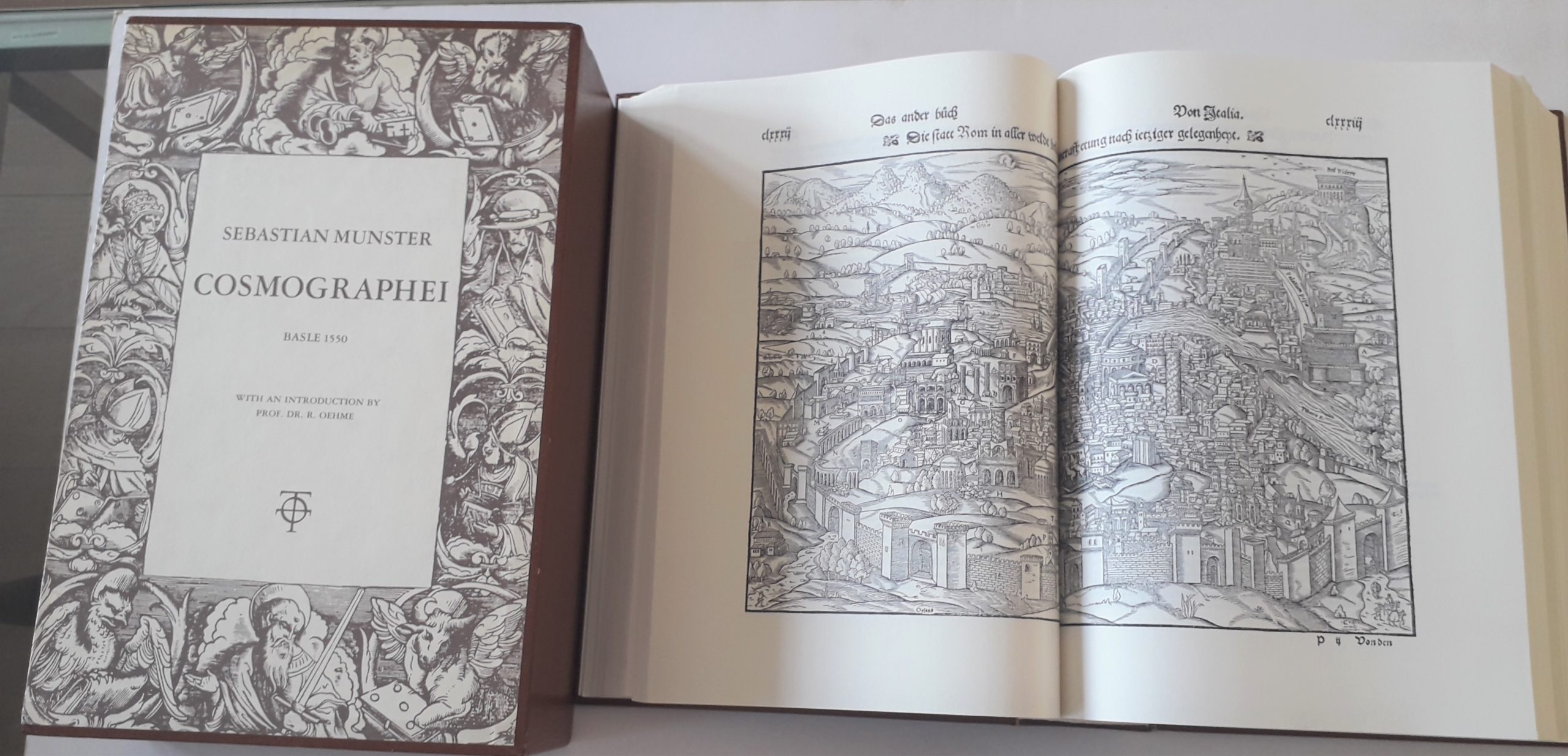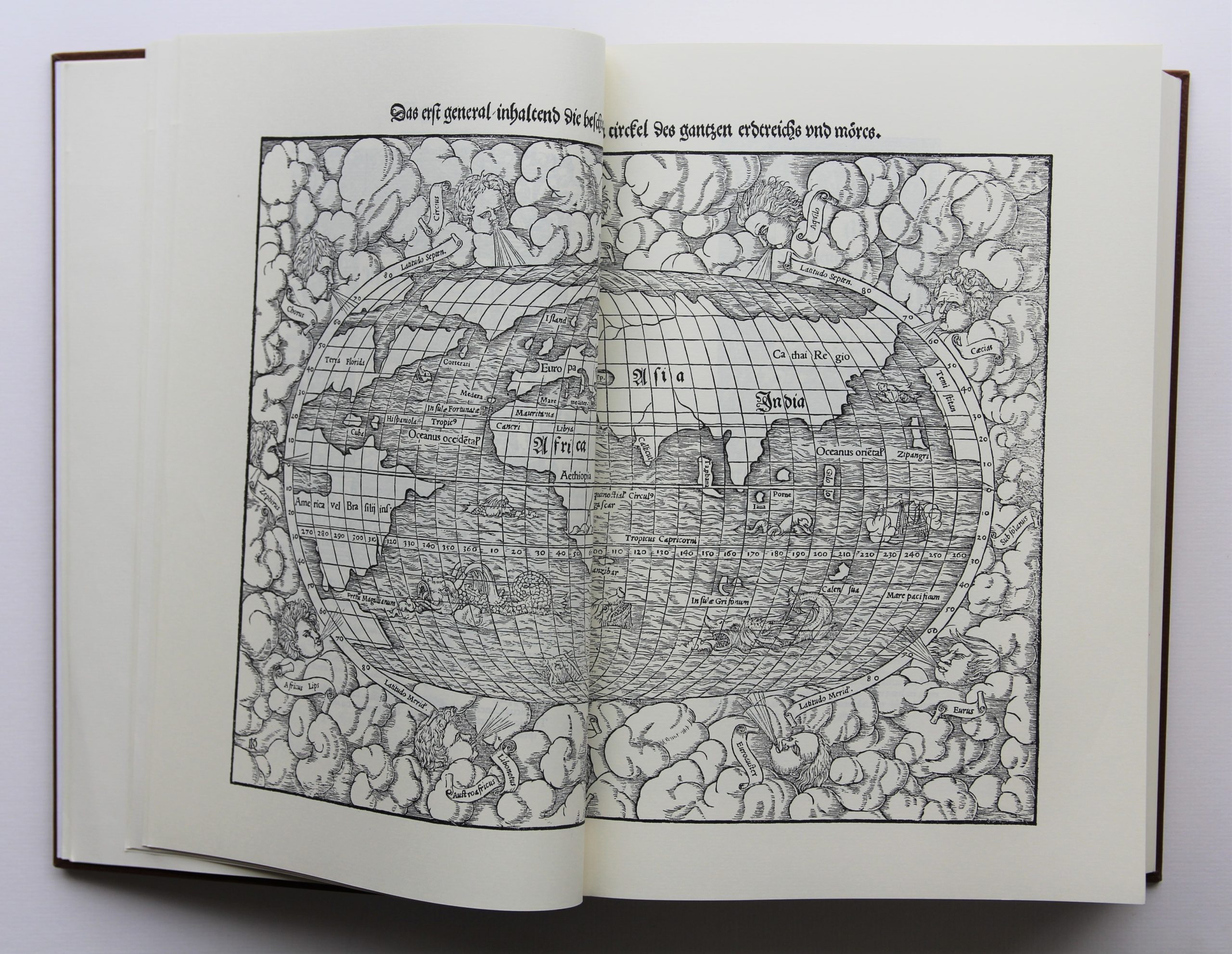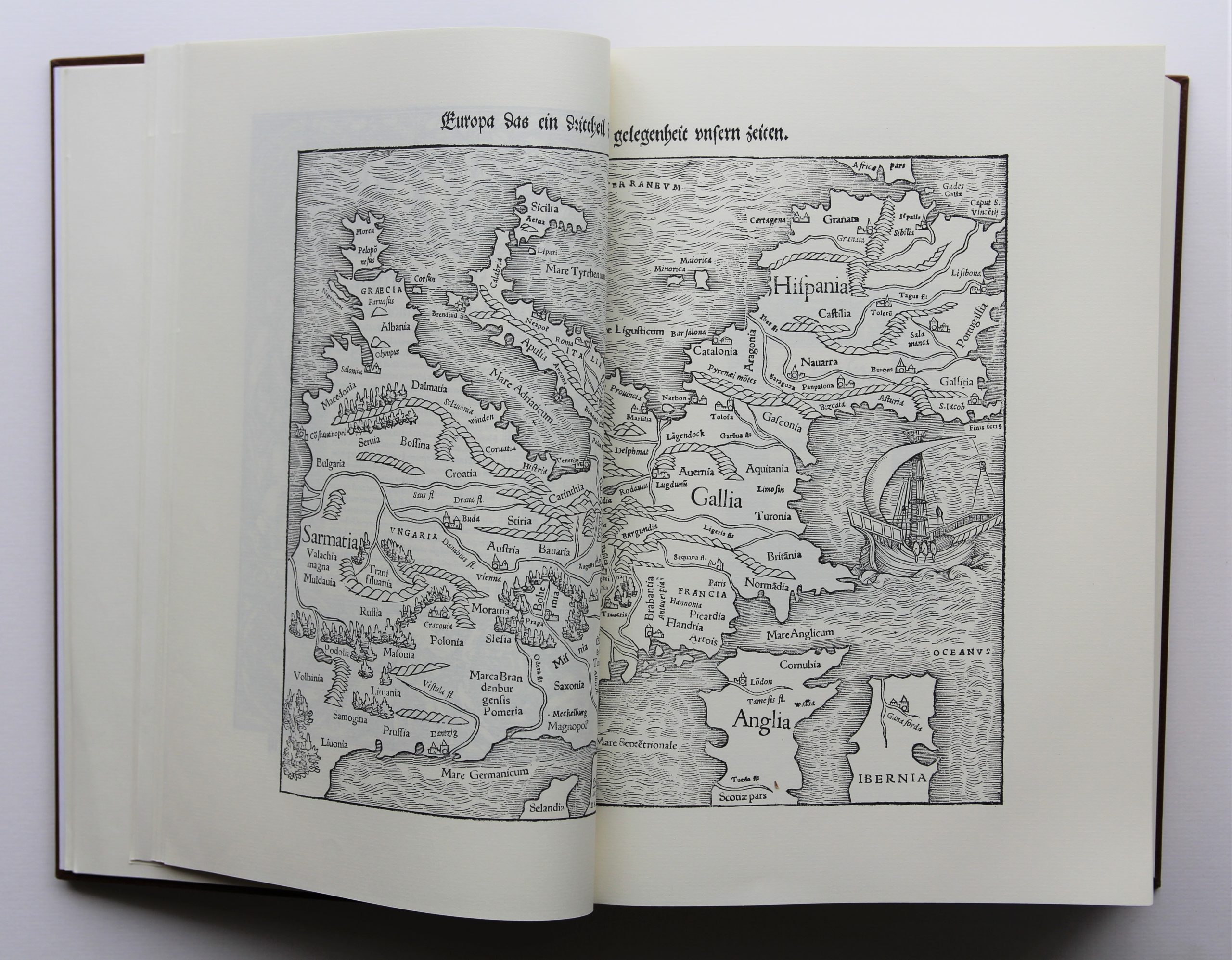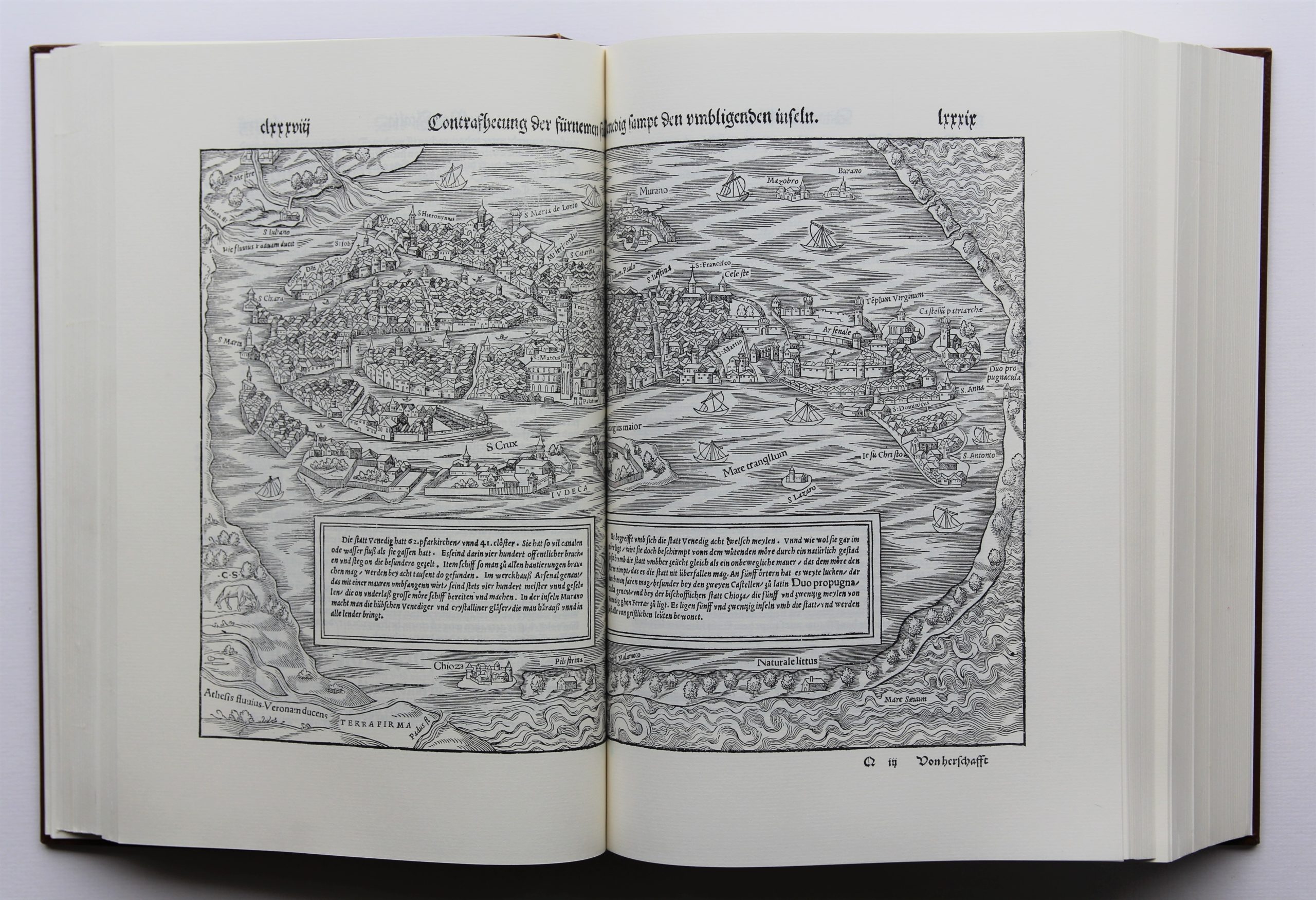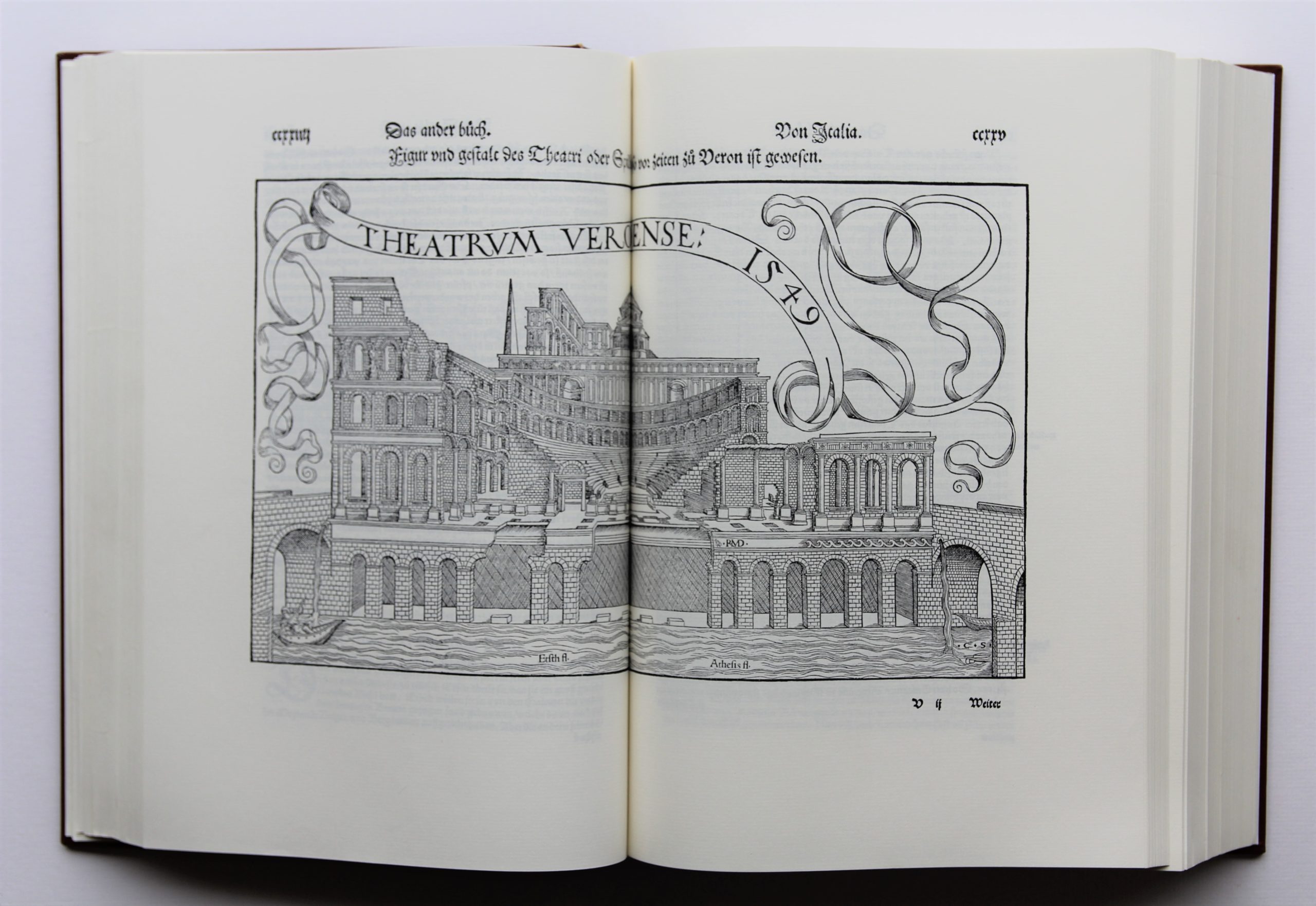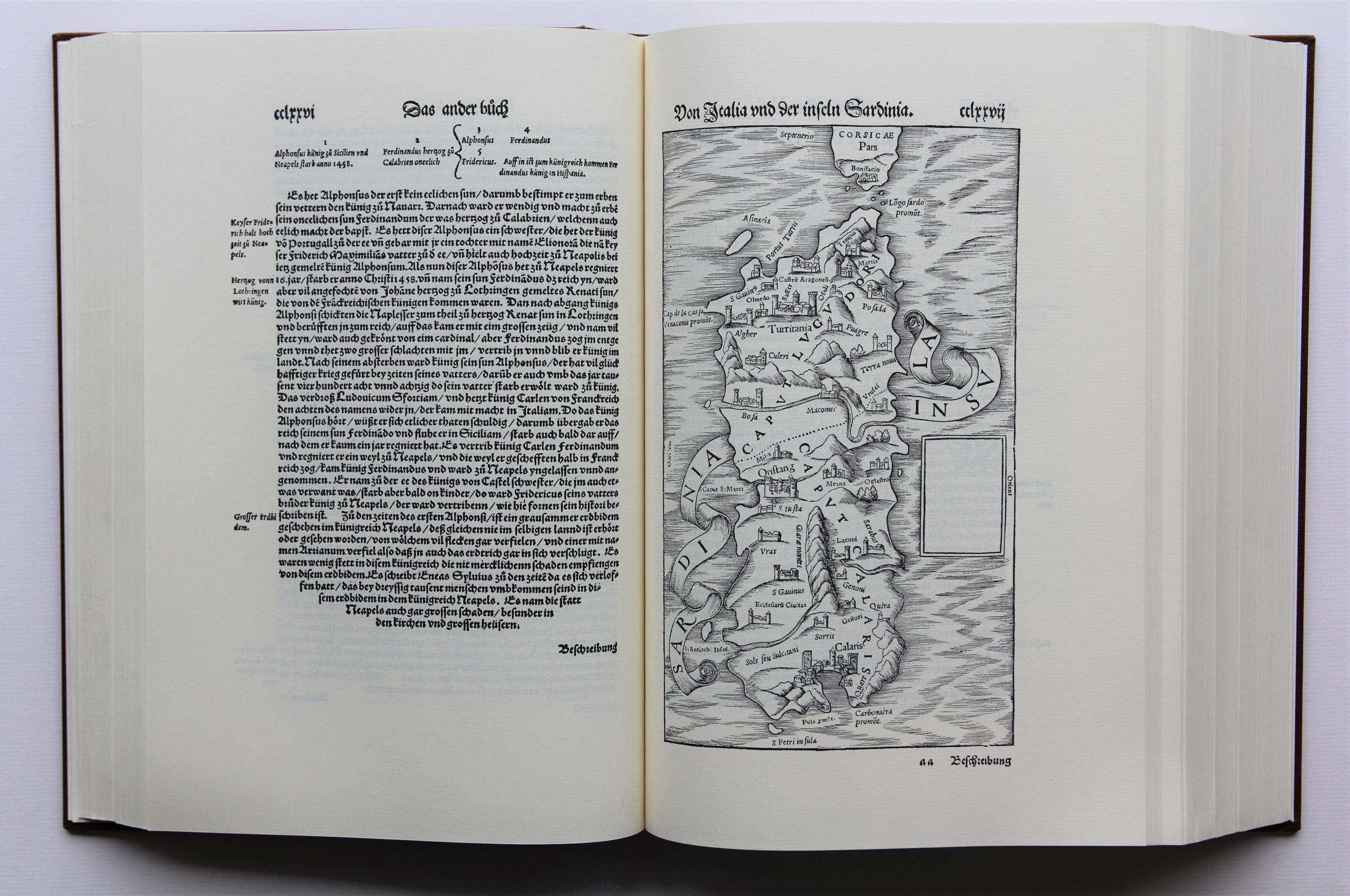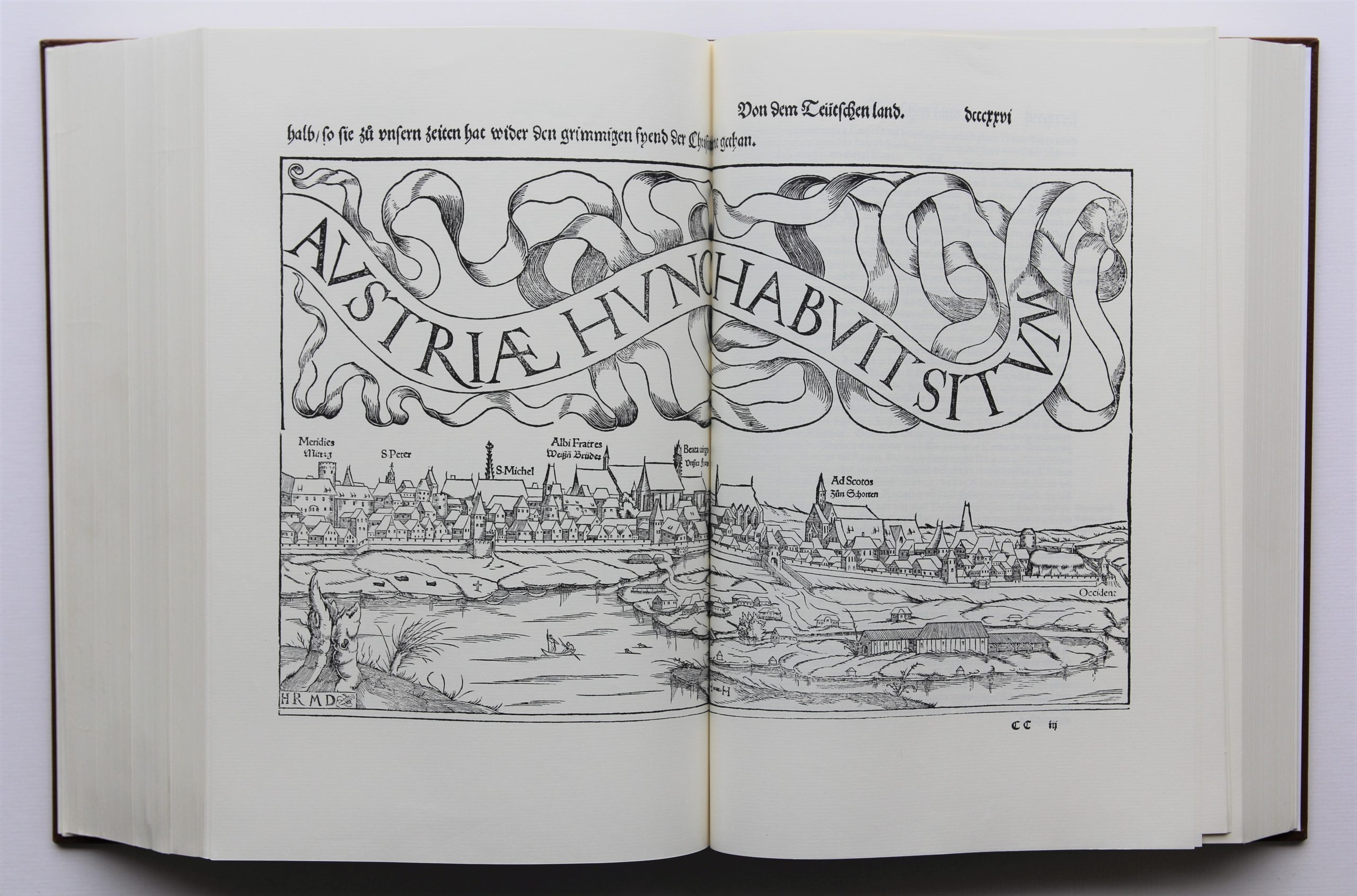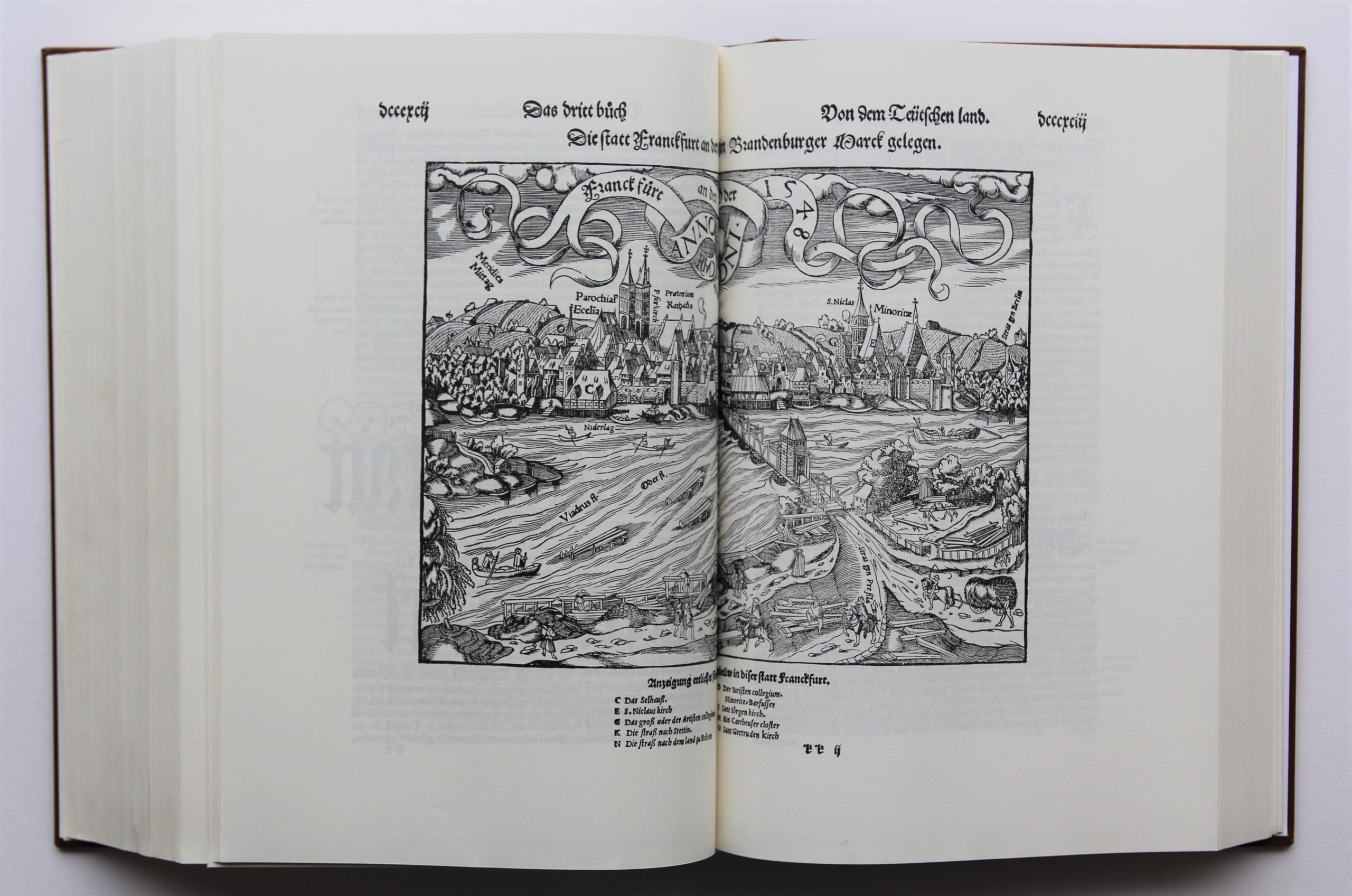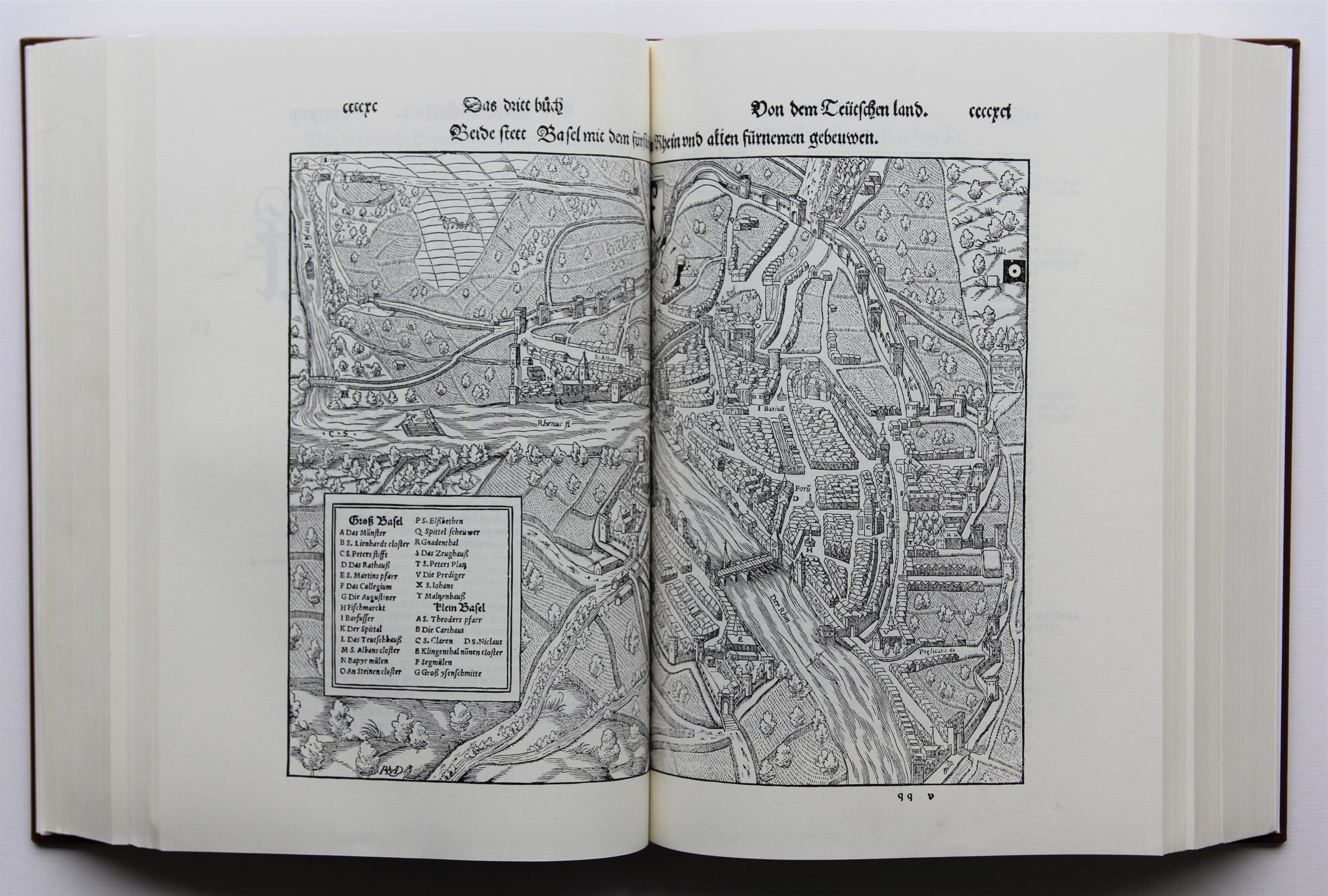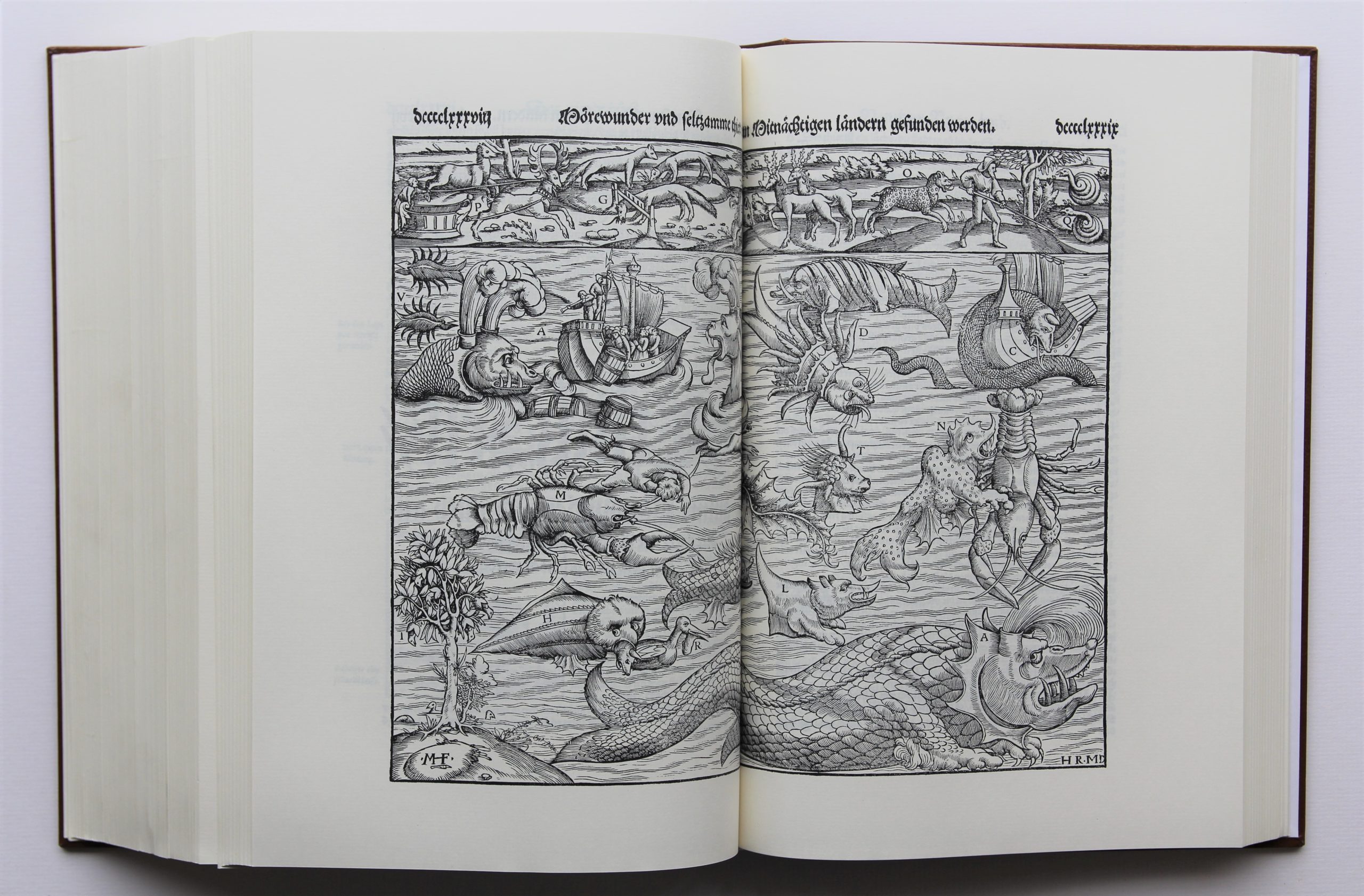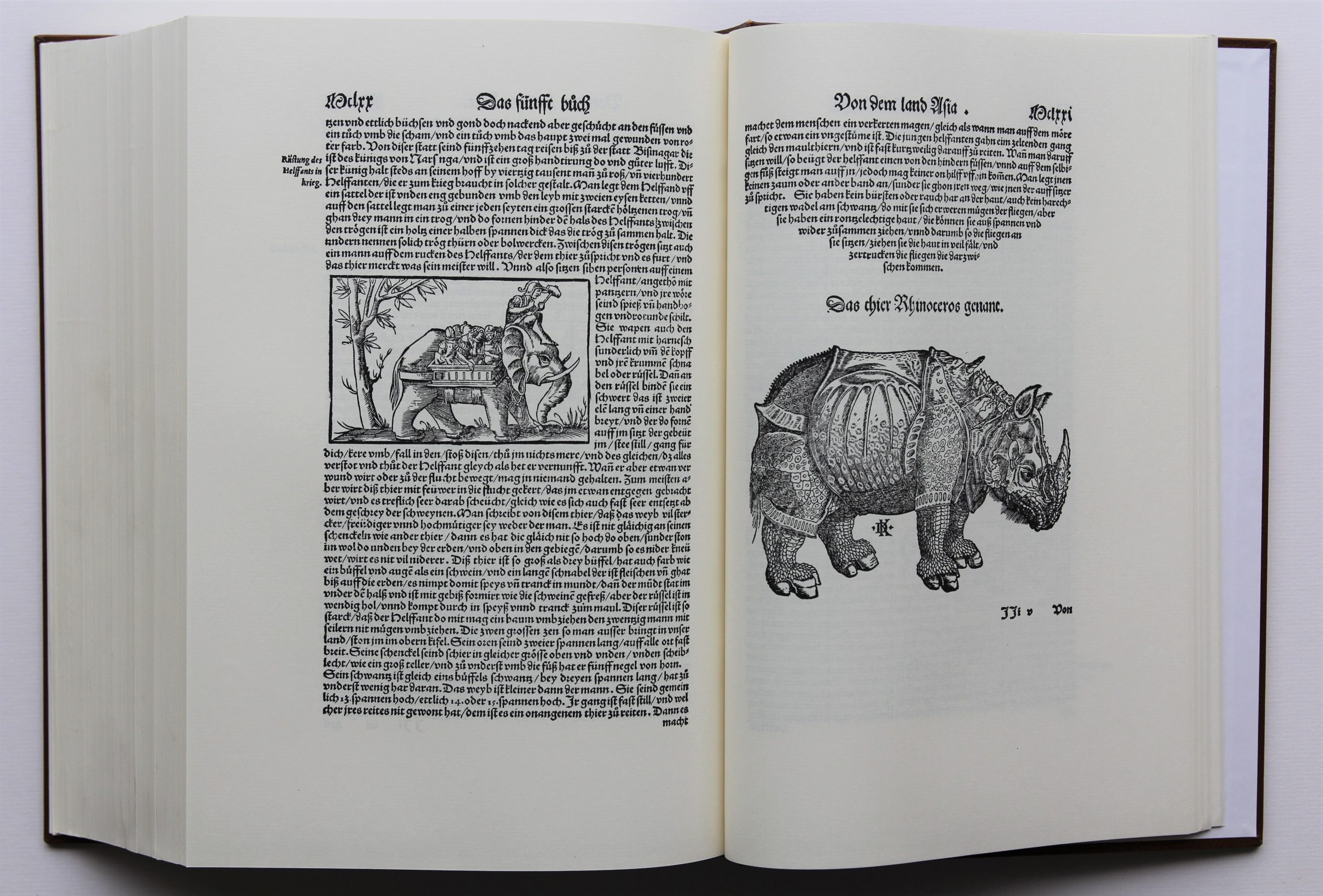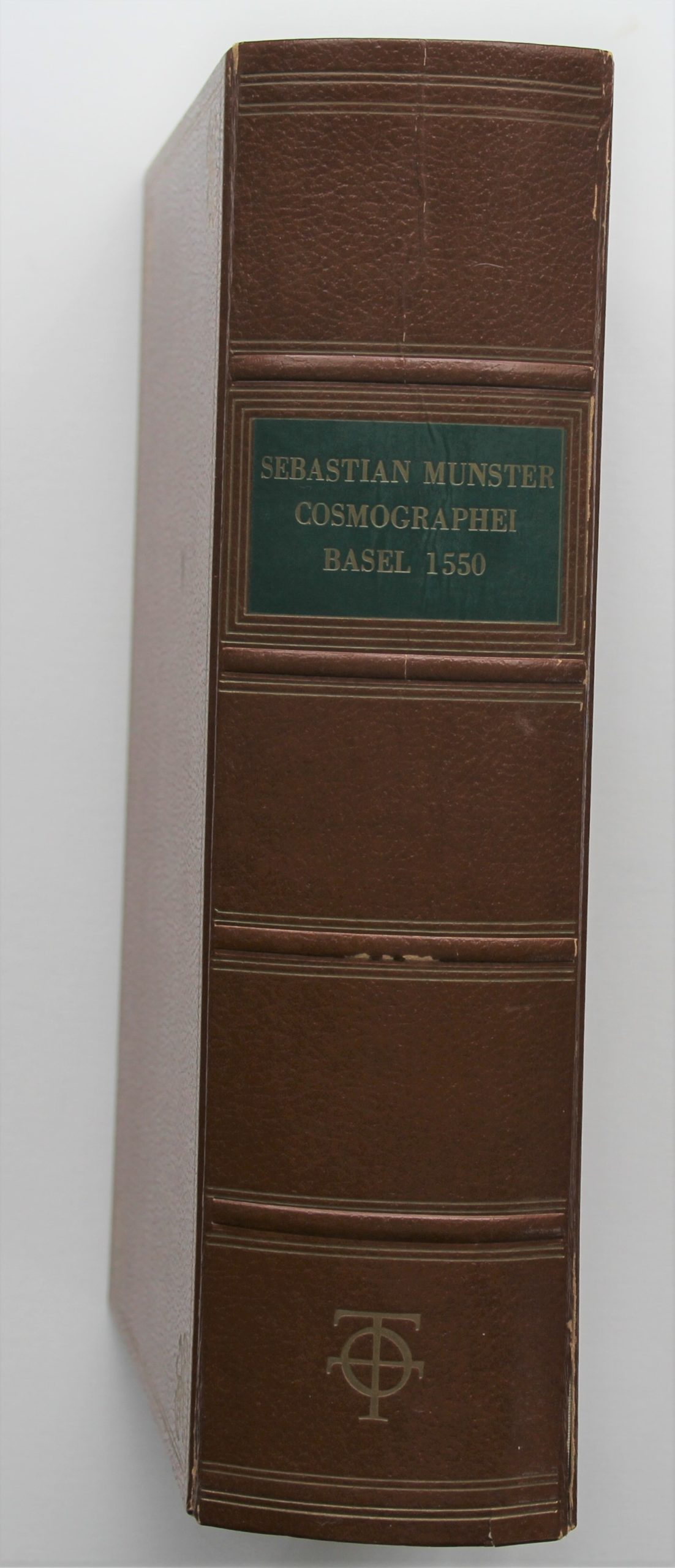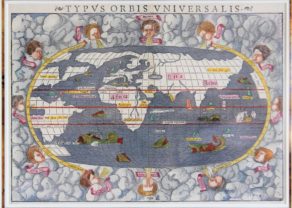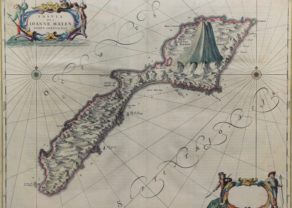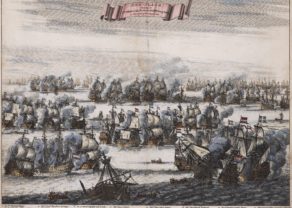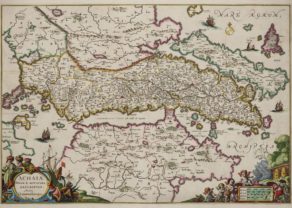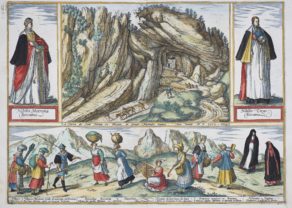Cosmographei by Münster, facsimile with commentary
A nice working tool on Mûnster’s Cosmographei
Detail
Cosmographei, 1544/1550
Date of publication: 1968
Introduction (XXVIII pages) in English and German by Prof. Dr. R. Oehme
Reproduction of maps at courtesy of the Sächsiche Landesbibliothek, Dresden
Publisher: nv Theatrum Orbis Terrarum
Dimensions: 24 x 34,5 x 6 cm
B/W pictures of the maps
Condition: Brown imit. leather. Top of spine sl. dam; else very good
Condition: A, but used
Pages: 1734 pp.
Language: text of atlas maps in German
In original slipcase
Original title: Cosmographei, oder Beschreibung aller Länder […]
This item is sold
The Cosmographei
The ‘Cosmographei’ of 1544 by Sebastian Münster (1488-1552), a German cartographer and cosmographer, was one of the most successful and popular books of the 16th century. The most highly valued of all cosmographies.
Münster acquired the material for his book in three ways:
- He used all available literary sources: on the one hand, Greek and Latin authors such as Herodotus, Strabo and Titus Livius; on the other hand, Italian, German and Swiss historians such as Marcantonio Sabellico, Beatus Rhenanus and Aegidius Tschudi.
- He tried to obtain original manuscript material for description of the countryside and of villages and towns.
- Finally, he obtained further material on his travels (primarily in south-west Germany, Switzerland, and Alsace).
Cosmographia not only contained the latest maps and views of many well-known cities, but also included an encyclopedic amount of detail about the known — and unknown — world, and was undoubtedly one of the most widely read books of its time.
Münster infers a connection between nature and the character of mountain folk. For instance, he portrays the Swiss as bold, serious people who fight for their rights and liberties, like the steep, cold and virtually barren mountain ranges. This view is often expressed in the description of the birth of the Confederation, too, where Münster reveals how the Swiss won their freedom from the “Roman Empire of German Nations”.
The first translation into Latin in 1550, which is regarded as the most complete, is extremely rare today. Translations into French, English, Czech and Italian followed between 1552 and 1558. The work was deemed the most modern and complete encyclopaedic treatise of the time and was reprinted more than 35 times over the next 84 years.
